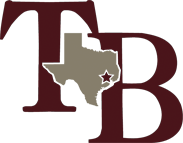Why Passing Lanes Should Not Be Used as Fast Lanes
Many drivers in Texas view the left lane as a “fast lane” that allows them to speed past other vehicles to reduce travel times. This is not accurate, and using it this way can get you into trouble. You could be pulled over, receive a ticket, and be fined up to $200 for lingering in the left passing lane for longer than necessary.
The Texas Motor Vehicle Code states that the left lane should be used only for passing. On multi-lane highways, you may see a sign that reads, “Left Lane For Passing Only.” “Passing” does not mean staying in the lane indefinitely. The writing on this sign must be taken literally – the left lane on these multi-lane highways is not a “fast lane,” it is meant for passing only.
Drivers who continuously stay in the left lane and keep passing multiple vehicles very often are traveling above the speed limit and are at risk for being ticketed for speeding. Speeding is illegal and dangerous. Driving too fast in the left lane allows you to get to your destination faster, but speeding poses a risk of accidents and injuries. In fact, according to the National Highway Traffic Safety Administration (NHTSA), speeding was a factor in more than one-fourth of all fatal car accidents in 2016, leading to a total of 10,111 deaths during that year. This is why failing to follow the speed limit in Texas, whether you are in the left lane or another lane, can lead to expensive traffic tickets, points on your license, and higher insurance rates.
Is it the Law in Texas That the Left Lane is for Passing Only?
Texas law clearly states that the left lane is for passing in most situations. According to the Texas Transportation Code (Title 7 Sec. 545.051), drivers should drive on the right half of the roadway, except for specific circumstances when:
- (1) the operator is passing another vehicle;
- (2) an obstruction necessitates moving the vehicle left of the center of the roadway and the operator yields the right of way to a vehicle that:
- (a) is moving in the proper direction on the unobstructed portion of the roadway; and
- (b) is an immediate hazard;
- (3) the operator is on a roadway divided into three marked lanes for traffic; or
- (4) the operator is on a roadway restricted to one-way traffic.
Driving Too Slow in the Left Lane
The statute also addresses situations where a driver is driving more slowly than the normal speed of other vehicles. In this case, the law states that the driver shall drive in the right-hand lane, or as close as practicable to the right-hand curb or edge of the roadway, unless the operator is:
(1) passing another vehicle; or
(2) preparing for a left turn at an intersection or into a private road or driveway.
Driving too slowly in the left lane can also have negative consequences for everyone on the road and can create crashes as well. When you engage in slowpoke driving or “left-lane camping,” you block the natural flow of traffic, preventing faster drivers from passing slower ones. This leads to increased congestion on the highway, which can raise the risk of accidents. Driving slowly in the left lane is also frustrating for other drivers who wish to drive at higher speeds. This can result in road rage, tailgating, and passing on the right, all of which are dangerous behaviors that make accidents more likely to occur.
In some states, driving slow in the left lane is even illegal, but in the state of Texas, no such “slowpoke law” exists. Nonetheless, driving too slowly in the left lane is never a good idea and can even lead to catastrophes.
So, driving in the left lane does not allow you to break the speed limit or to drive slower than surrounding traffic. This lane is designed only for passing, and at speeds appropriate to doing so without breaking the law. The only time you can drive in the left lane on highways is when you are passing, there is an obstruction in the road if there are more than two lanes, and, lastly, if traffic is restricted.
Penalties For Staying in The Passing Lane in Texas
In Texas, impeding the flow of traffic in the left lane is punishable by a fine of up to $200.
The left-lane passing law was first enforced in 2013, but it is still often ignored by many drivers on the roads who are either speeding past multiple vehicles without returning to the right lane or driving slowly in the left lane. The law could be enforced on any highway, but drivers are especially likely to be pulled over on State and U.S. Highways, where two lanes go in the same direction, such as on Highways 44 and 77. The law requires drivers on multi-lane highways to use the left lane only for passing.
According to the City of Houston website, you can expect to see passing lane enforcement restrictions 24 hours a day on four city highways:
- East Freeway (I-10) between Waco Street and Uvalde
- State Highway 225 between Loop 610 and State Highway 146
- North Freeway (I-45) between Loop 610 and Rankin Road
- US 290 between Loop 610 and Beltway 8.
Be forewarned – use the left lane only for passing on these and all other multi-laned roads!
If you were injured in a crash caused by a reckless truck driver misusing the left lane, a Houston truck accident lawyer can investigate your case and help hold the responsible party accountable.
Using the Left Lane Safely
Using the left lane safely is one of the best ways to reduce the risk of accidents on the highway. When driving in the left lane, always remember to:
- Drive the speed limit. Even though you are in the left lane, it is not a “fast” lane. Speed limit laws still apply and should be obeyed even when passing other vehicles.
- Move over for faster traffic. If you aren’t actively passing another vehicle, stay out of the left lane so it will remain open for cars traveling at higher speeds.
- Drive defensively. Even if you are using the left lane properly, other drivers may not follow the same rules. Pay attention to other drivers’ behavior so you can react accordingly.
Taking Action after an Accident
Even when you take precautions on the road, accidents can still occur. If you have been involved in an automobile accident that was caused by another driver, you may be entitled to compensation. For example, if a driver speeding in the left lane caused a crash that led to injuries and property damage, you may be able to recover damages from that driver. Damages may cover both your economic damages (monetary losses and costs) and your non-economic damages such as pain and suffering that resulted from the accident.
Be aware that what you do after your car accident in Texas will directly affect your case. If you are able to do so, take the following steps:
- Remain on the scene and immediately call 911 if there’s anyone injured.
- Tell the investigating officer what happened and make sure that an accurate police report is created.
- Exchange information with everyone involved in the collision. Obtain their full name, address, phone number(s), email address, license plate number, driver’s license number, and insurance information.
- Take pictures of this information, the accident scene, any property damage, and any injuries.
- Do not talk about the car accident with anyone else or argue about who was at fault.
- Seek medical treatment, even if you think you are not badly injured, and make sure all injuries are documented. Some injuries take time to manifest and may worsen over time.
- Contact an attorney as soon as you can following your car accident. An unrepresented injured victim may lack the training or experience necessary to negotiate with an insurance company adjuster. You may make costly mistakes and wind up settling for far less than your case is worth.
Get Help from Our Car Accident Lawyers
If you or a loved one has been injured or someone has died in a car accident, the experienced car accident attorneys at Terry Bryant Accident & Injury Law are ready to help. Terry Bryant has been practicing law since 1985. He is a former judge and is Board Certified in personal injury trial law by the Texas Board of Legal Specialization and will bring his wealth of knowledge and experience to your case. He and his handpicked legal team make sure that clients are treated fairly and that they get the compensation they deserve.
We believe our job is to get justice for our clients — and we take it seriously. We combine a deep knowledge of the law, years of experience in negotiation and litigation, a compassionate approach to our clients, and the tenacity to go up against large corporations — and we win.
We offer a free, no-obligation consultation to discuss your legal options, and there are no fees to you unless and until we win your case. To learn more about filing a claim after a car accident, call (713) 973-8888 or toll-free 1 (800) 444-5000 to schedule a free consultation. We have a No Fee Guarantee.
Attorney Terry Bryant
 Terry Bryant is Board Certified in personal injury trial law, which means his extensive knowledge of the law has been recognized by the Texas Board of Legal Specialization, setting him apart from many other injury attorneys. The 22 years he spent as a Municipal Judge, Spring Valley Village, TX also provides him keen insight into the Texas court system. That experience also helps shape his perspective on personal injury cases and how they might resolve. This unique insight benefits his clients. [ Attorney Bio ]
Terry Bryant is Board Certified in personal injury trial law, which means his extensive knowledge of the law has been recognized by the Texas Board of Legal Specialization, setting him apart from many other injury attorneys. The 22 years he spent as a Municipal Judge, Spring Valley Village, TX also provides him keen insight into the Texas court system. That experience also helps shape his perspective on personal injury cases and how they might resolve. This unique insight benefits his clients. [ Attorney Bio ]


 Terry Bryant is Board Certified in personal injury trial law, which means his extensive knowledge of the law has been recognized by the Texas Board of Legal Specialization, setting him apart from many other injury attorneys. The 22 years he spent as a Municipal Judge, Spring Valley Village, TX also provides him keen insight into the Texas court system. That experience also helps shape his perspective on personal injury cases and how they might resolve. This unique insight benefits his clients. [
Terry Bryant is Board Certified in personal injury trial law, which means his extensive knowledge of the law has been recognized by the Texas Board of Legal Specialization, setting him apart from many other injury attorneys. The 22 years he spent as a Municipal Judge, Spring Valley Village, TX also provides him keen insight into the Texas court system. That experience also helps shape his perspective on personal injury cases and how they might resolve. This unique insight benefits his clients. [ 

